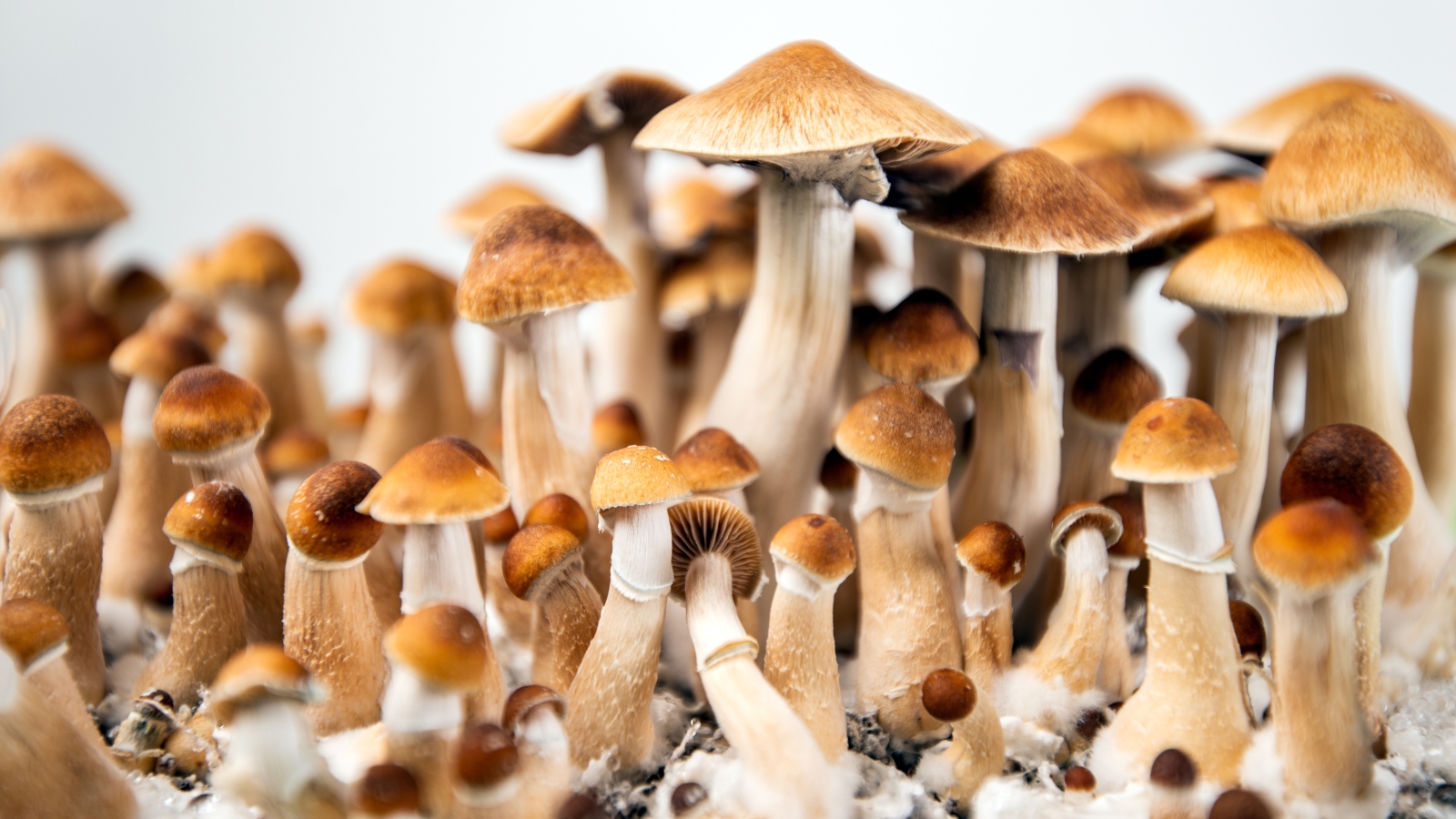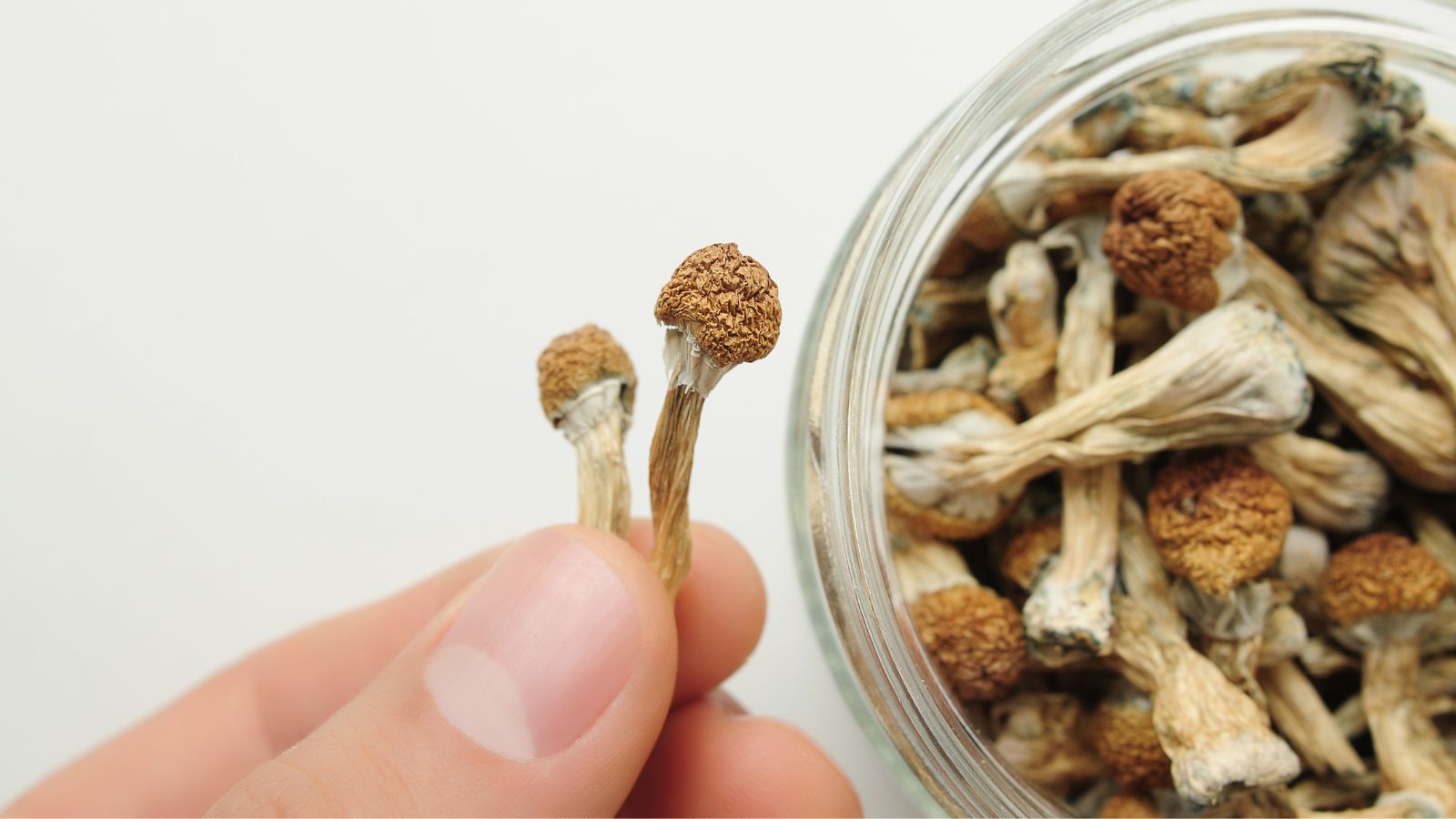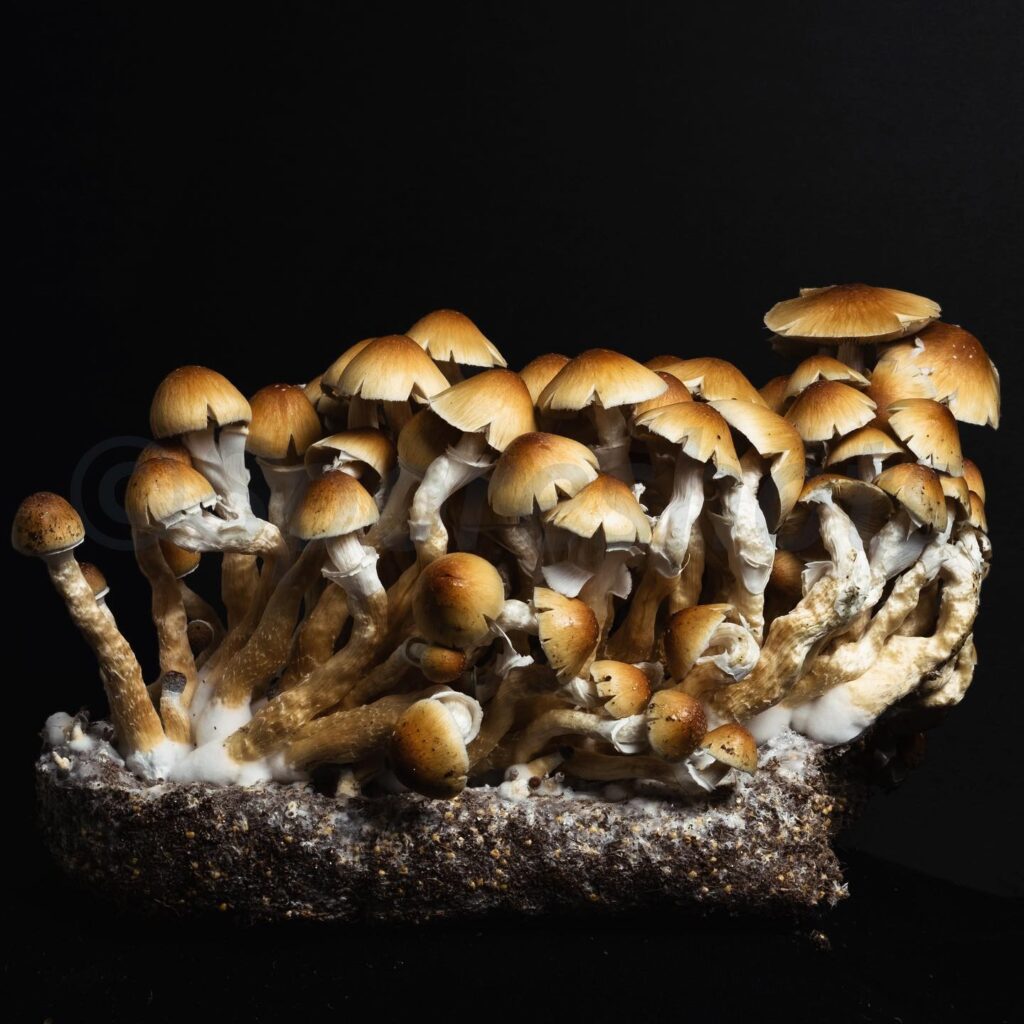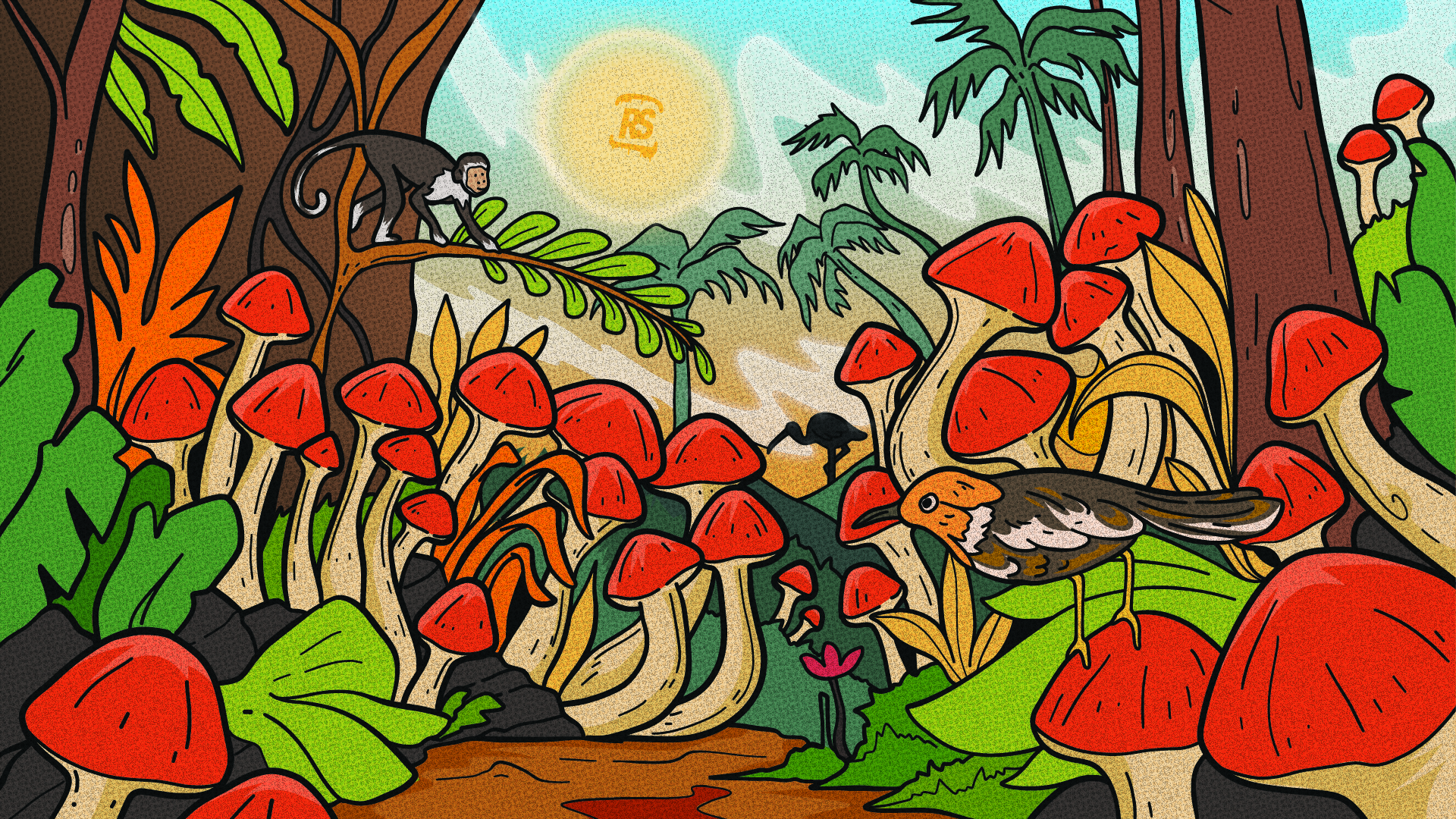Welcome, fellow mycophiles and psychedelic explorers, to a captivating journey through the world of Cambodian mushrooms. Often sought after for their unique qualities and potent effects, these mushrooms provide an intriguing narrative within the vast terrain of mycology. Whether you’re a seasoned psychonaut or a curious novice, our exploration will take you from the forests of Southeast Asia to the inner workings of the human mind.
What Are Cambodian Mushrooms?
Cambodian mushrooms, belonging to the broad and intriguing group of Psilocybe cubensis, are a unique strain of psychedelic fungi. Named after their place of discovery, these fascinating mushrooms hail from the heart of Southeast Asia, specifically the vibrant nation of Cambodia.

The discovery story of Cambodian mushrooms traces back to the captivating region of Angkor Wat. This sprawling temple complex, a UNESCO World Heritage Site and one of the world’s most significant archaeological treasures, is more than just a cultural and historical spectacle. Amid the elaborate carvings, towering spires, and extensive grounds, the first Cambodian mushrooms were found, taking their name from this enchanting locale.
It was within the tropical, humid climate of Angkor Wat that these robust mushrooms thrived, flourishing amidst the ruins. Unlike many other psychedelic mushrooms that prefer the cool, misty environments of the Pacific Northwest or the British Isles, Cambodian mushrooms are a testament to the adaptability and resilience of the Psilocybe cubensis species. Their propensity to grow rapidly and in warm climates has made them popular among cultivators and psychonauts alike.
Are Cambodian Mushrooms Psychedelic?
Absolutely. Cambodian mushrooms are a distinct member of the Psilocybe cubensis family, known for their psychedelic properties. The primary active compounds responsible for the psychedelic effects are psilocybin and psilocin, both of which are found in Cambodian mushrooms.
When ingested, these compounds interact with the brain’s serotonin receptors, leading to altered thoughts, perceptions, and emotions. Psilocybin, in particular, is a prodrug, meaning it’s converted into psilocin once ingested. It’s psilocin that’s responsible for the psychoactive effects commonly associated with ‘magic’ mushrooms, from gentle perceptual shifts to profound hallucinogenic experiences.

Cambodian Mushroom Identification
The wonderful world of mycology is replete with an astounding variety of mushrooms, each with its distinctive features. Within this rich tapestry of biodiversity, identifying a specific strain like the Cambodian mushrooms can be an intriguing journey. Understanding their habitat and characteristics is fundamental to proper identification.
Where Do Cambodian Mushrooms Grow?
Cambodian mushrooms, as their name indicates, originate from Cambodia, where the tropical and humid climate creates ideal conditions for their growth. In the wild, they are typically found growing in cow dung within the lush grasslands and open fields of Southeast Asia. But they’re not limited to their native lands; under the right conditions, these mushrooms can be cultivated virtually anywhere in the world.
The Cambodian mushroom strain is noted for its resilience and ability to grow in warmer temperatures, making it a popular choice for at-home cultivation. It’s common to find these mushrooms flourishing in carefully controlled home cultivation setups or in commercially available shroom grow kits.
How to Identify Cambodian Mushrooms
In the wild or in a growth setup, Cambodian mushrooms exhibit several distinctive features that aid their identification. Like other Psilocybe cubensis strains, Cambodian mushrooms have a conical to bell-shaped cap, typically caramel to golden brown in color, and often growing to a sizable diameter. The cap’s color often lightens towards the edges, creating a mesmerizing gradient effect.
The gills, located beneath the cap, are a darker shade, ranging from light gray in younger mushrooms to dark purple in mature specimens. This color change coincides with the release of spores, an essential process in the mushroom’s life cycle, and an important identification marker.
The stem or stipe of Cambodian mushrooms is usually white to off-white, with a fibrous texture. The base of the stem may exhibit a fluffy mycelium structure – the root-like network from which mushrooms grow.
A critical step in mushroom identification is taking a spore print, a process that involves allowing spores to drop from the mushroom’s gills onto a surface to reveal their color. The spore print of Cambodian mushrooms is a dark purplish-brown.
Remember, the world of fungi can be deceiving, and similar-looking species can have vastly different effects when ingested. Never consume a mushroom unless you are absolutely sure of its identification, and always consult with a professional mycologist when in doubt.
Cambodian Mushroom Potency
Delving into the potency of Cambodian mushrooms, we encounter a range of possibilities influenced by various factors such as growing conditions, freshness, and individual biological responses. While potency can be variable, these members of the Psilocybe cubensis family are known for providing a reliably moderate psychedelic experience, striking a balance between more gentle strains and those known for their intense effects.
What Is a Cambodian Mushroom Dose?
Understanding dosage is an essential part of any psychedelic journey, and with Cambodian mushrooms, this holds true. The correct dose can vary significantly depending on the intended experience, individual tolerance, and the user’s physical and mental health.
A microdose, often used for its potential to enhance creativity, focus, and mood without significant alterations in perception, typically ranges from 0.1 to 0.5 grams of dried Cambodian mushrooms. This sub-perceptual dose is often used in microdosing regimens, where small doses are taken every few days over a period of weeks or months.
On the other end of the spectrum, a standard ‘trip’ dose of Cambodian mushrooms usually falls between 2 and 3.5 grams of dried mushrooms. This dosage can lead to a more profound psychedelic experience, often characterized by changes in sensory perception, emotional shifts, introspection, and in some cases, visual and auditory hallucinations.
As always, these dosage guidelines should serve as a starting point. Sensitivity to psilocybin varies widely among individuals, and the effects can be influenced by a host of factors such as body weight, metabolism, stomach contents, and psychological state. It’s often recommended to start with a smaller dose when trying a new strain and always to prioritize safety and comfort when embarking on a psychedelic journey. Remember, set and setting are critical components of any psychedelic experience, so ensure you’re in a supportive, comfortable environment before you begin.
Cambodian Mushroom Effects
When it comes to the effects of Cambodian mushrooms, one can expect a diverse range of experiences that span the physical, emotional, and perceptual realms. This variability is influenced by many factors, including dosage, individual biology, mindset (often referred to as ‘set’), and physical surroundings (or ‘setting’).
Shrooms by the Gram
At the level of a microdose (0.1 to 0.5 grams), effects are typically sub-perceptual, meaning they do not significantly alter one’s consciousness or sensory perception. Users may experience subtle enhancements in mood, creativity, focus, and overall sense of well-being. Some people report feeling more open, empathetic, and connected to others and the world around them.
At a moderate dose (around 2 grams), the effects become more perceptible. Users may begin to experience sensory changes such as visual distortions or enhancements, increased sensitivity to sound, and alterations in the perception of time. Emotionally, one might feel a heightened sense of introspection, access to typically unconscious thoughts or memories, and swings in mood that can range from euphoria to anxiety. Physical sensations may include changes in body temperature, a sense of physical euphoria, and changes in appetite or sleep patterns.
At higher doses (3 grams and above), Cambodian mushrooms can elicit profound changes in consciousness. These can include intense visual hallucinations, including geometric patterns, vibrant colors, and imagined scenes or entities. Some users describe mystical or spiritual experiences, a dissolving of the ego, and a feeling of oneness with the universe.
As with any psychedelic, the experience can be unpredictable, and there is potential for challenging experiences or ‘bad trips.’ This risk underscores the importance of using psychedelics responsibly, within a supportive and safe set and setting, and ideally under the guidance of an experienced guide or sitter.
Please note that the effects of Cambodian mushrooms, like all psychedelics, can be potent and unpredictable. If you’re considering using them, do so responsibly, and consider seeking out support resources such as harm reduction guides and community forums. As with any mind-altering substance, remember to prioritize safety, respect the experience, and listen to your body and mind.

How to Take Cambodian Mushrooms
Entering the world of psilocybin mushrooms opens up a variety of consumption methods, each with its unique benefits and considerations. Whether you prefer the traditional method of eating them raw or dried, brewing them into a tea, grinding them into a powder, or taking capsules, there is a method to suit every individual’s preference. Let’s explore each method in more detail:
Eating Raw or Dried
The most traditional method of consuming Cambodian mushrooms is eating them directly, either fresh (raw) or after they’ve been dried. Eating fresh mushrooms offers a more mild flavor, while dried mushrooms have a concentrated, earthy taste that some find unpalatable. Combining them with food such as chocolate or integrating them into a meal can help mask the taste.
Brewing into Tea
Brewing mushrooms into a tea offers a palatable and stomach-friendly method of consumption. Simply chop or crush the mushrooms, steep them in hot water for about 10-15 minutes, strain, and enjoy. You can also add other ingredients, such as tea bags, honey, or lemon to enhance the flavor. One advantage of this method is that it can reduce some of the gastric discomfort that some people experience when consuming mushrooms.
Grinding into a Powder
Another method is to grind dried mushrooms into a powder, which can then be added to food or drink. This method allows for precise dosing, which is especially important for those intending to microdose. A coffee grinder or similar device can be used to turn dried mushrooms into a fine powder.
Capsules
For those who prefer a tasteless and discreet method of consumption, capsules are an excellent option. After grinding the mushrooms into a powder, they can be packed into empty capsules. This method is especially popular for microdosing, as it allows for consistent, precise doses.
Can You Grow Cambodian Mushrooms at Home?
The answer is yes, you can cultivate Cambodian mushrooms at home, and many enthusiasts do. Given their adaptability and resilience to various growth conditions, these mushrooms are often recommended for first-time growers. They thrive in warmer climates and are known for their rapid colonization.
Cultivation involves several stages, starting from inoculation of a suitable growth medium with spores or mycelium, through to harvesting the mature mushrooms. You can start with a spore syringe or a pre-colonized substrate kit, both of which are often available from reputable online suppliers.
Where to Buy Cambodian Mushroom Spores

If you want to grow Cambodian mushrooms at home, we recommend sourcing your spores from Lab Link Supply. Their mushroom spores offer the perfect blend of suprerior genetics and rigorous lab testing, all under the guidance of leading mycologists.
Where Are Cambodian Mushrooms Legal?
In the United States, psilocybin is classified as a Schedule I substance under the Controlled Substances Act, making it illegal to manufacture, distribute, or possess. However, there have been recent moves toward decriminalization in certain cities and states.
In Canada, psilocybin is classified as a Schedule III drug under the Controlled Drugs and Substances Act, making it illegal to possess, produce, or distribute. However, exceptions have been made for medical and scientific purposes.
Some countries, such as Brazil and Vietnam, have more lenient laws regarding psilocybin mushrooms. In the Netherlands, while psilocybin mushrooms are illegal, ‘magic truffles,’ which are a different part of the same organism and contain the same active compounds, are legally available.
Use With Caution
While Cambodian mushrooms offer a unique and intriguing psychedelic journey, it’s important to use them responsibly. Start with low doses, especially if you’re a beginner, and always make sure you’re in a safe, comfortable environment. It’s also wise to have a trusted friend present, particularly for larger doses. And, as always, the golden rule of mycology applies: if you’re not 100% sure it’s safe, don’t eat it.
As we continue to navigate the vast and varied landscape of mushrooms, every shared experience helps illuminate the path for fellow explorers. Remember, the world of mycology is as expansive as it is enthralling, and there’s always more to discover. Safe travels, mycophiles!















